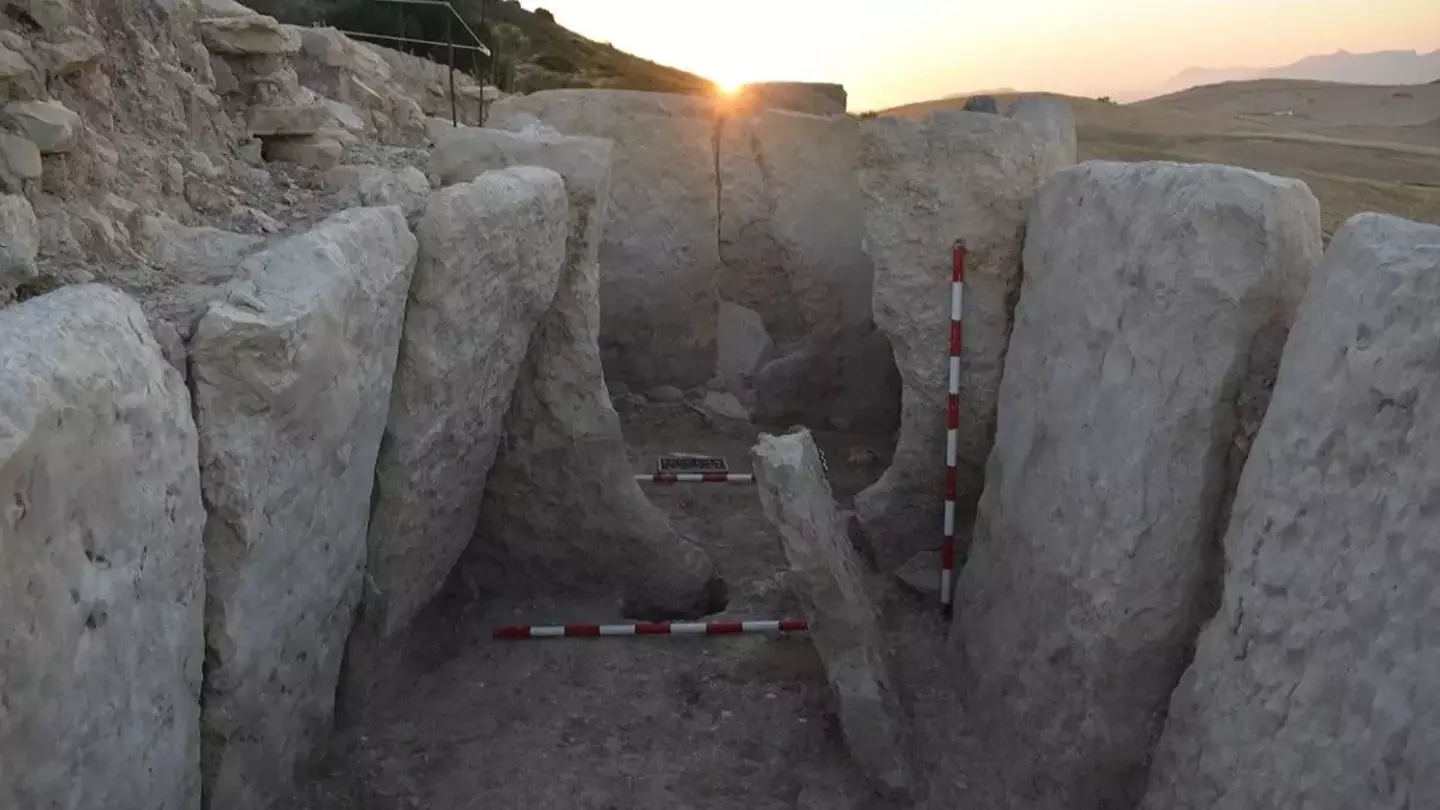
Archaeologists have unearthed one of the most important megalithic discoveries in decades after finding a 5,500-year-old tomb filled with human remains.
Led by Eduardo Vijande and Serafín Becerra, a team from the University of Cádiz found the monumental dolmen in the La Lentejuela necropolis, a significant archaeological site near the town of Teba, in Malaga, Spain.
The necropolis is known for its incredible megalithic tombs, many of which date back to the Late Neolithic and Copper Ages.
Its most recent discovery measures almost 13 metres in length and is constructed using giant slabs of stone, some of which are more than two metres tall. The gigantic pieces were used to create walls and compartments within the tomb.
Advert

According to scientists, the monument has been incredibly well preserved, which has allowed them to reconstruct its design and better understand the burial practices of those who built and used it.
When inspecting the tomb a little closer, the team found several different areas containing human remains, confirming its use as a mass grave.
They also found funerary items like flint arrowheads, large stone blades, a finely crafted halberd, and ornaments made of rare materials like amber, ivory, and seashells. Researchers say the presence of marine shells so far inland suggests long-distance trade networks and shows how the sea carried symbolic importance as a marker of status and prestige.
In addition to its impressive size and preservation, the tomb offers invaluable information about the symbolic and social worlds of prehistoric Iberian communities. Dolmens across Europe served not only as tombs but also as ritual spaces, territorial markers, or symbols of land ownership. Some may have been aligned with celestial events like solstices, linking them to ritual or cosmological practices.
Advert

Spain, in particular, is rich in megalithic monuments, perhaps the most well-known being Spanish Stonehenge at Guadalperal. The newly studied La Lentejuela dolmen now joins this heritage as one of the most significant prehistoric monuments on the Iberian Peninsula.
The project, known as Monumentality, Time, and Society: The Megalithic Phenomenon in the La Lentejuela Necropolis, spanned across four excavation seasons, providing hands-on training for university students, who gained practical experience with prehistoric artefacts and excavation methods.
As the research into the dolmens continues, archaeologists are looking forward to further enhancing their understanding of the people who built the tomb and their role in larger communities, as well as the symbolic meaning of the grave goods accompanying the dead.
Topics: World News
